Thread: General Hemi Info part 3
-
05-16-2005 08:39 PM #1
General Hemi Info part 3
Transmission Adaptors
When the HEMIs were new transmissions of the day could leave a lot to be desired. Currently you also run into the additional problem of finding parts to rebuild them and someone who knows how to go thru one. This makes a transmission swap look very appealing when you get to the point of actually putting one of these engines into a car or truck. There are a bunch of adaptors out there for both automatic and stick setups. Most are listed as being for the non-extended bellhousing Chrysler 331-354 and 392. For the Dodge and Desoto owners, the bellhousing bolt pattern on your engines is the same. The only thing that I can think of that would cause them not to work would be the amount of crankshaft overhang. For you info, the crank overhang on the Chrysler engines is 1 ¼” as measured from the rear edge of the rear main cap to the outer edge of the crank flange. I’ve never done an automatic adaptor but have done a 4 speed based on Chryslers A833 gear box.Last edited by Mike P; 04-18-2016 at 02:01 PM.
-
Advertising

- Google Adsense
- REGISTERED USERS DO NOT SEE THIS AD
-
05-16-2005 08:41 PM #2
Transmission adaptors part 2
I covered converting the extended bellhousing engine to a stick in this post
http://www.clubhotrod.com/forums/sho...threadid=14794
If you have a non-extended block the procedures are the same, except you use a modified factory spacer plate with the legs trimmed off. The picture below shows the spacer and the piece that needs to be cut off the driver’s side. If you look closely you can see the mark I made which shows about where it needs to be cut on the passenger’s side.
There are 2 thickness of factory spacer, a wide one (app 1 1/2" and a thin one approx 3/4"). THE 3/4" ONE IS THE ONE YOU NEED TO USE. Please note I have run into some plates with a slight difference in thickness so it is imperative to check the gear engagement depth on the starter when building one of these. If the gap is slightly tight, a starter spacer as shown in the picture can be used to set it properly. There is a chance the spacer will need to be trimmed to retain just the side with the bolt holes.Last edited by Mike P; 04-18-2016 at 02:03 PM.
-
05-16-2005 08:43 PM #3
Transmission adaptors part 3
At one time I was going to put a 331 Non Extended HEMI and A833 4 speed in a 54 Studebaker PU. My friend who ran a machine shop and I figured out how to do the conversion and actually started building it but I ended up selling the truck before we finished it.
For this swap we were going to use a stock Dodge Truck bell housing (the HEMI/POLY bell housings are the same), starter flywheel, pressure plate and 11” passenger car clutch disc(the 11” truck disc was the wrong spline count for the 833).
The reason I was going this route was that I wanted to retain the thru-the-floor clutch and brake peddles. On the Studebaker (and other 50’s era trucks like Dodge and Ford) the clutch linkage is built to pull rather than push. That’s what this bellhousing was designed for and this Dodge setup even uses the same throw out bearing as the 51-52 Ford.
I had collected the parts and got as far as building a sleeve to go over the pilot bearing retainer to make it the required size for the throw out bearing (it’s shown in the picture beside the bearing retainer, all that was left was tack welding the sleeve to the stock bearing retainer ).
That left building a plate that would bolt to the back of the bellhousing (with countersunk bolts). The plate would be big enough to accept the A833 transmission bolt pattern and the correct width to position the transmission depth wise (as I recall the thickness we needed was about 1”). The center hole would be bored to the correct size for the bearing retainer that was to be used. The centering process is pretty much the procedure you go through when determining if a bellhousing is properly centered (or the cheaters method I used when setting up my 4 speed for the 57 Plymouth, which was a dummy case with input shaft and bearing retainer).
If you have the parts lying around this could also be a good cheap way to get a 4 speed in your car or truck. If you need the linkage to push rather than pull, just turn the lever over from the top to the bottom. The only real draw back I saw with it was that it required the use of an original HEMI starter which can be a little hard to come by.Last edited by Mike P; 04-18-2016 at 02:07 PM.
-
04-15-2016 11:11 PM #4
Hey, I remember making that sleeve. Is that the flywheel we cut down?
-
04-16-2016 04:25 AM #5
No that's a stock stock truck flywheel and pressure plate. That whole setup got traded out to a guy with a 392 powered gasser project several years ago.
.I've NEVER seen a car come from the factory that couldn't be improved..... 
-
04-18-2016 02:15 PM #6
Being as Dave brought this back I figured I’d update it a bit.
This is the second 4 speed adapter I built. It’s pretty basic, just the modified factory spacer plate and a Poly flywheel cut down to work with a 340 ring gear (69bee did the flywheel work for me about 25 years ago).
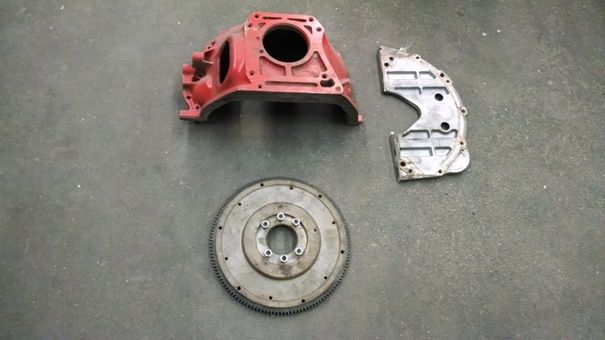
As noted above the Polys only used 6 7/16” studs instead of 8 so you have 2 empty holes in the crank flange. Six is really sufficient until you start getting into engines making a lot of HP or getting a lot of abuse. If a person really wanted to, the flywheel is capable of being drilled for the additional 2 studs if you really feel you need them.
If you’re into doing extra work the flywheel flange on the crankshaft can even be drilled and tapped for ½” flywheel bolts instead of the 7/16” studs and nuts. Wildcap even used to sell a fixture (drill and tap guide) that might still be available to make sure the holes and threads are straight.
I did find with this setup that a fairly thick spacer was required to space the starter correctly.

I used this particular setup for test starts while the Hemi that is going in the 37 Dodge was on the test stand for the last several years. This is also the same basic setup I’ve been using on my 57 Plymouth for the last 10 years with no problems.
.I've NEVER seen a car come from the factory that couldn't be improved..... 
-
04-22-2016 09:24 PM #7
I’m using a Hot Heads 727/904/518 adapter to mate a 46RH to the Hemi going into the 37 Dodge pickup. The instructions that come with the adapter are pretty basic so I thought I’d expand on them a bit.
The kit comes with the engine to transmission spacer, flex plate, hub adapter/flex plate space and hardware.
The first thing to do is install the hub adapter. The bolt holes are indexed and will only line up in one position. It registers on the outside of the crankshaft flange. Even after the crankshaft flange is cleaned and sanded it is still a tight fit. Because it’s such a tight fit, I would recommend that after verifying all 8 holes line up, use 4 of the supplied flywheel bolts ad temporarily using 4 regular nuts (instead of the supplied self locking nuts) to evenly draw the hub on (the regular nuts give a better feel for this than the self locking ones.

The next step is to install the Flexplate. It is also indexed and the bolts will only line up in 1 position. Getting your hand with a self locking nut in there and getting it started can be aggravating, unless you have a pair of these in your tool box (and if you don’t have them you should).
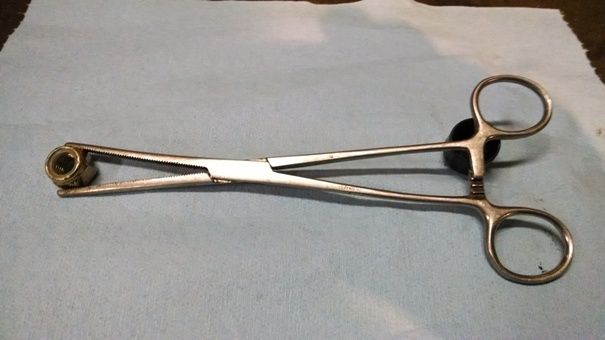
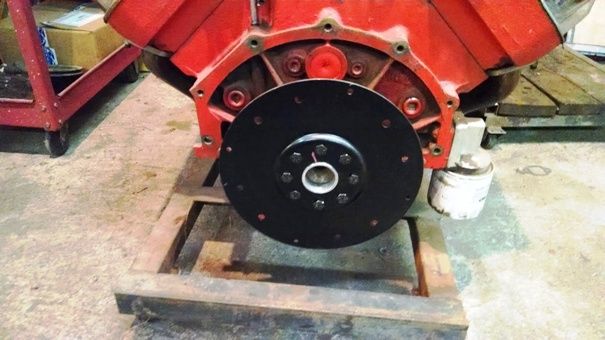
Fortunately the hole in the center of the transmission adapter is big enough to slip it past the flex plate …..you really don’t want to have to work around it when installing the hub spacer and flex plate.
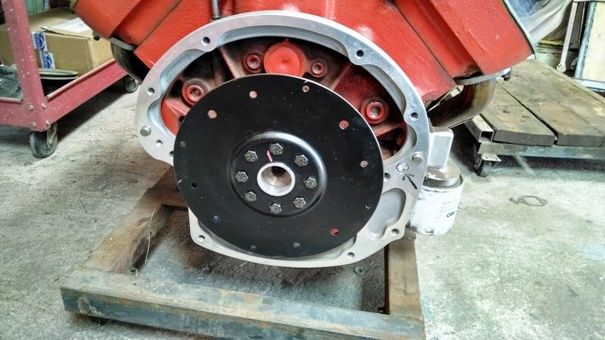
I mentioned the kit comes with hardware. Besides the flywheel bolts, it also includes the bolts for attaching the adapter and transmission.
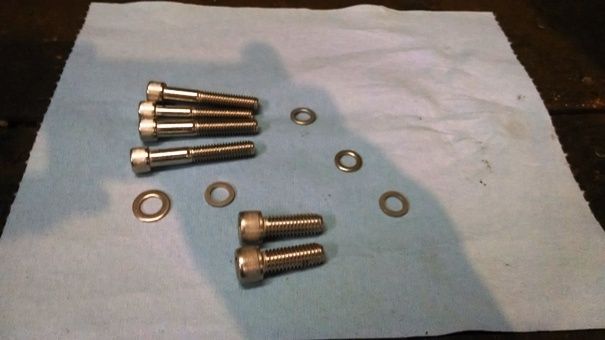
While it’s quality hardware, I don’t like using Allen head bolts to hold the transmission on. Generally you just can’t get an Allen wrench or socket up to them if you’re taking the transmission out in the vehicle. I replaced all but one of the Allen head bolts but one with cap screws.
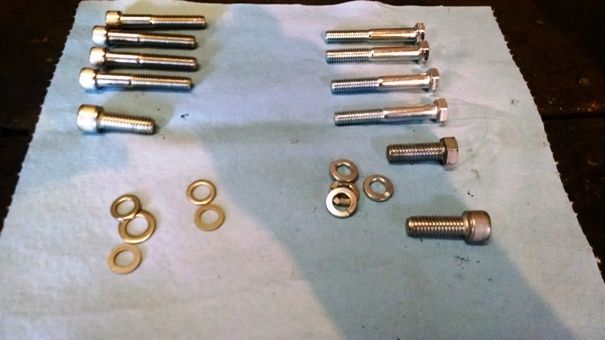
The Allen head I did use retains the spacer plate to the engine block.
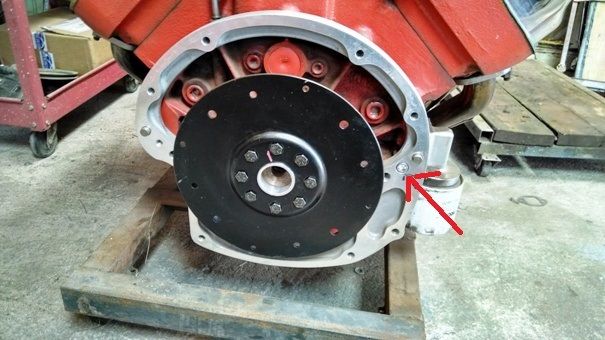
The other bolt that retains the spacer goes in from engine side and is located on the drivers side of the engine.
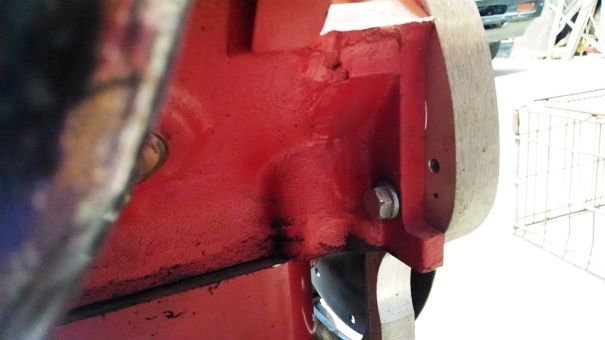
Before you stuff the convertor in the transmission I would suggest you do the following. Remove any paint from the end of the convertor that seats into the back of the aluminum spacer hub and test fit the convertor into the back of the spacer and make sure it doesn’t hang up ( as you will probably need to turn the convertor to line up the holes for the convertor and if it's sticking in the hub it can be pretty difficult).
There are 3 sets of convertor bolt holes in the flex plate. Verify which set of holes you are using (at least one of the sets is indexed and all 4 bolts will only go in one location). Once you have verified the holes , mark 1 hole in the flex plate and the corresponding lug on the convertor so you will know how to orient then when you bolt up the convertor to the flex plate after the transmission is attached.
The 46RH is a heavy transmission (hell all the torqueflights are heavy LOL), so I cheated when I installed mine. I supported the transmission on a chain hoist ( a cherry picker will also work), and used 2 long alignment dowels in the block to line everything up and slide the transmission into the engine.

Besides the 4 bolts at the top of the bellhousing you can also install 3 bolts from the spacer to the transmission at the bottom of the adapter (these bolts are not included in the kit. You will need 7/16 course thread bolts. One on the drivers side.
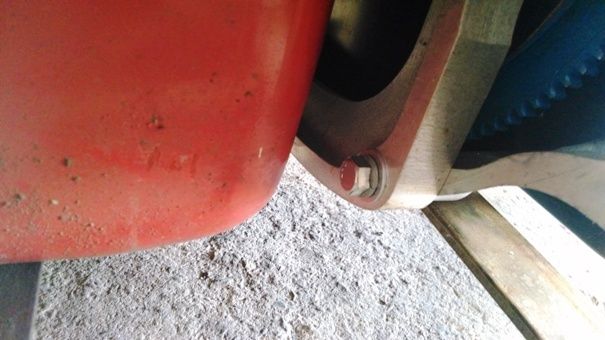
and 2 on the passenger side.

I had heard that getting the torque convertor bolts started was a real PIA, and they aren’t wrong. The best place to get access to them seems to be on the drivers side thru the bottom access hole. A box end wrench with a lot of offset helps.
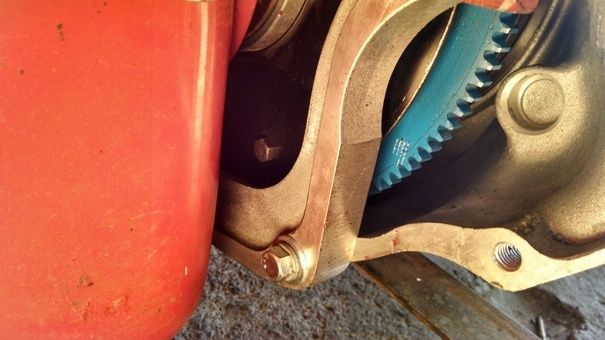
Just a hint on the convertor bolts. Only start them finger tight at first…….chances are you will need to wiggle the convertor a bit to get them all started. Once there all started tighten them (a little locktight when you install them is also a good idea).
And that’s pretty much it.
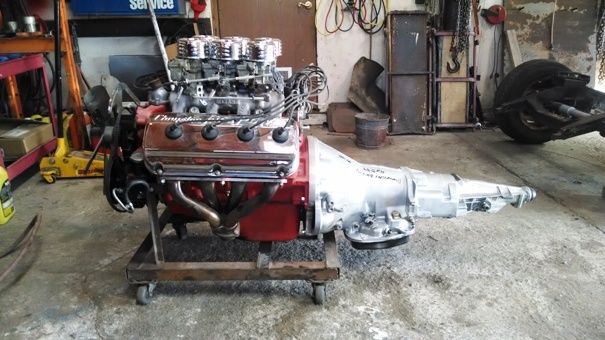
.Last edited by Mike P; 04-23-2016 at 08:53 PM.
I've NEVER seen a car come from the factory that couldn't be improved..... 




 5Likes
5Likes

 LinkBack URL
LinkBack URL About LinkBacks
About LinkBacks Reply With Quote
Reply With Quote

A belated Happy 78th Birthday Roger Spears
Belated Happy Birthday